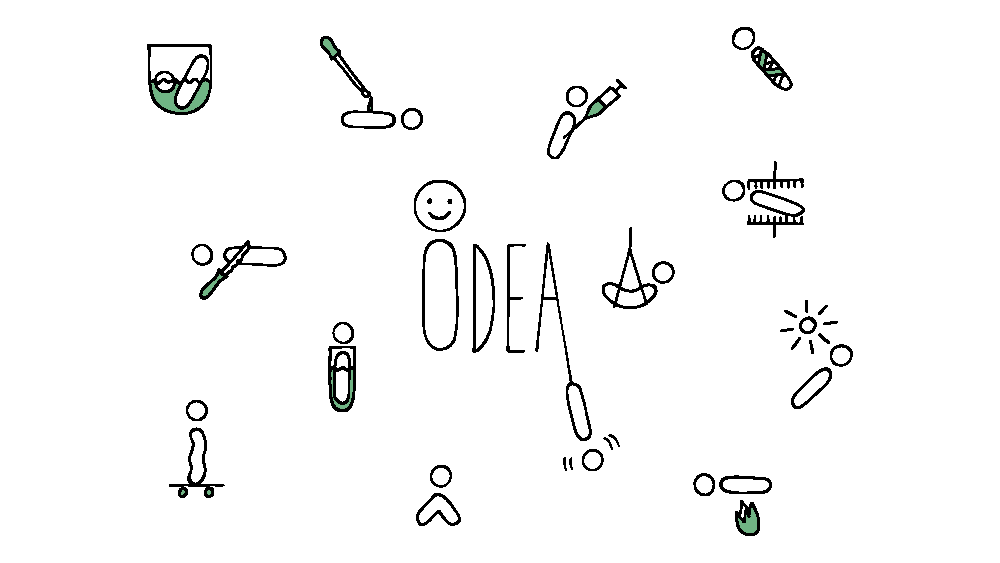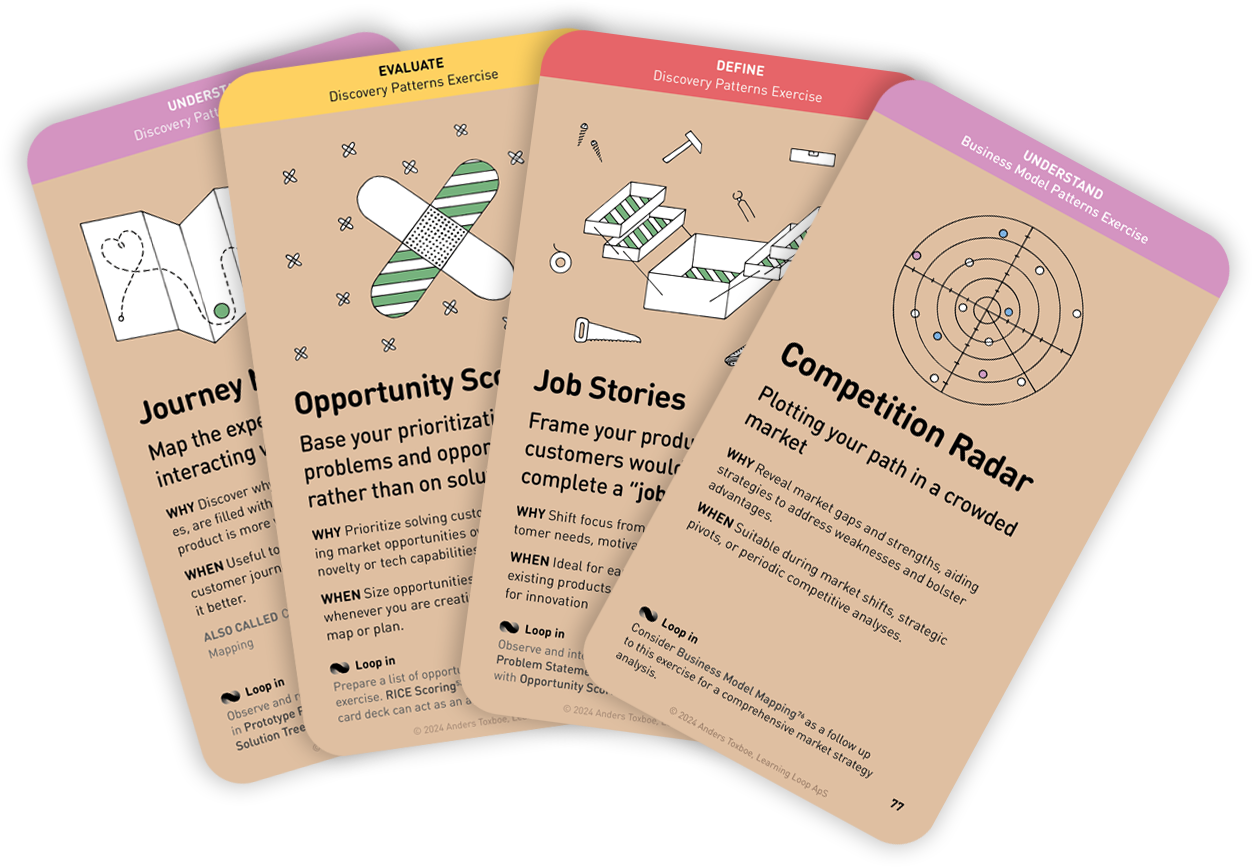
Why: Ensure your solutions are not just creative but also desirable, viable, and feasible by testing them
When: Use to facilitate the transition from opportunity discovery to solution development and evaluation
The “How Might We Experiment” exercise combines two key methodologies—framing problems as questions (often used in design thinking) and converting those questions into experiments to drive learning. This approach helps teams break down complex challenges into manageable steps, guiding them from problem identification to practical, testable solutions.
Why “How Might We” questions?
The core of the exercise lies in transforming problems into “How Might We” (HMW) questions. This process is a tool for reframing issues in a more optimistic and solution-focused way. By asking “How might we…”, teams are encouraged to think beyond the problem itself and begin imagining possibilities. It’s not about identifying one correct answer but rather opening the door to many creative solutions.
For example, instead of focusing on the issue of users filling out the wrong tax form (a narrow and problem-oriented mindset), reframing it as “HMW make users feel confident they are filing their taxes correctly?” prompts a broader exploration of solutions. The result is an actionable challenge that invites innovation.
Why experiments?
The second layer of the exercise focuses on moving from ideation to action through experimentation. Rather than jumping straight to implementing solutions, teams create low-risk, testable versions of their ideas. Experimentation, often rooted in agile and lean principles, allows teams to quickly validate which solutions are most effective before committing resources. This iterative approach limits risk and accelerates learning.
By converting HMW questions into experiments, teams move beyond theoretical discussions and start gathering real-world data on what works and what doesn’t. The iterative cycle of generating ideas, testing, learning, and refining enables more informed decision-making and better outcomes.
This provide several benefits
-
It encourages exploration. The HMW framework nudges teams to think broadly about potential solutions, often leading to more innovative ideas that might have been overlooked otherwise.
-
Experimentation reducess risk. By testing ideas in small, controlled experiments, teams can learn what works before committing to full-scale implementation, thereby reducing the risk of failure.
-
Experiments accelerates learning. Experimentation fosters rapid learning and adaptation. Teams quickly gain feedback on their ideas and can iterate based on real-world results rather than assumptions.
-
It promotes collaboration. The process encourages collaboration at multiple stages—from generating HMW questions to ideating and comparing solutions, to designing experiments. This involvement of diverse perspectives leads to more robust solutions.
By framing challenges as HMW questions and using experiments to validate solutions, teams can innovate more effectively, learn faster, and ultimately make better decisions.
Instructions for running this play
- Break down a larger design challenge into smaller insights or problems to solve.
-
Explain how to write a How Might We… (HMW) question: by rephrasing a problem or insight as a question asking one or more solutions.
Example:
**Problem: **Users complete the wrong tax form**Question: **HMW make users feel confident they are filing their taxes correctly?
- Rephrase each problem or insight as questions by adding “How Might We…” at the beginning, writing only one HMW idea or opportunity per sticky note
- Ideate multiple solutions for each HMW question either using Silent Storming or any other ideation exercise.
- Compare & contrast generated solutions using the RICE Scoring exercise.
- Convert the top solutions to experiments so you can test which will yield the best and most certain outcome using the Experiment Ideation exercise and the Experiment Outline.
- Carry out your test!
Tips to perfect this play
Master and adapt the play to fit your context and needs.
Tip: Reverse HMW Questions
Challenge participants to think of the opposite of what they want to achieve. This can uncover hidden assumptions and stimulate creative thinking.
A collection of workshop exercises that will help you ditch dull meetings and facilitate with confidence. It will help you master the design process and have more productive time with your team. The card deck will be ready for purchase in the end of 2026 and is now undergoing rigorous testing.
Reserve your deck!